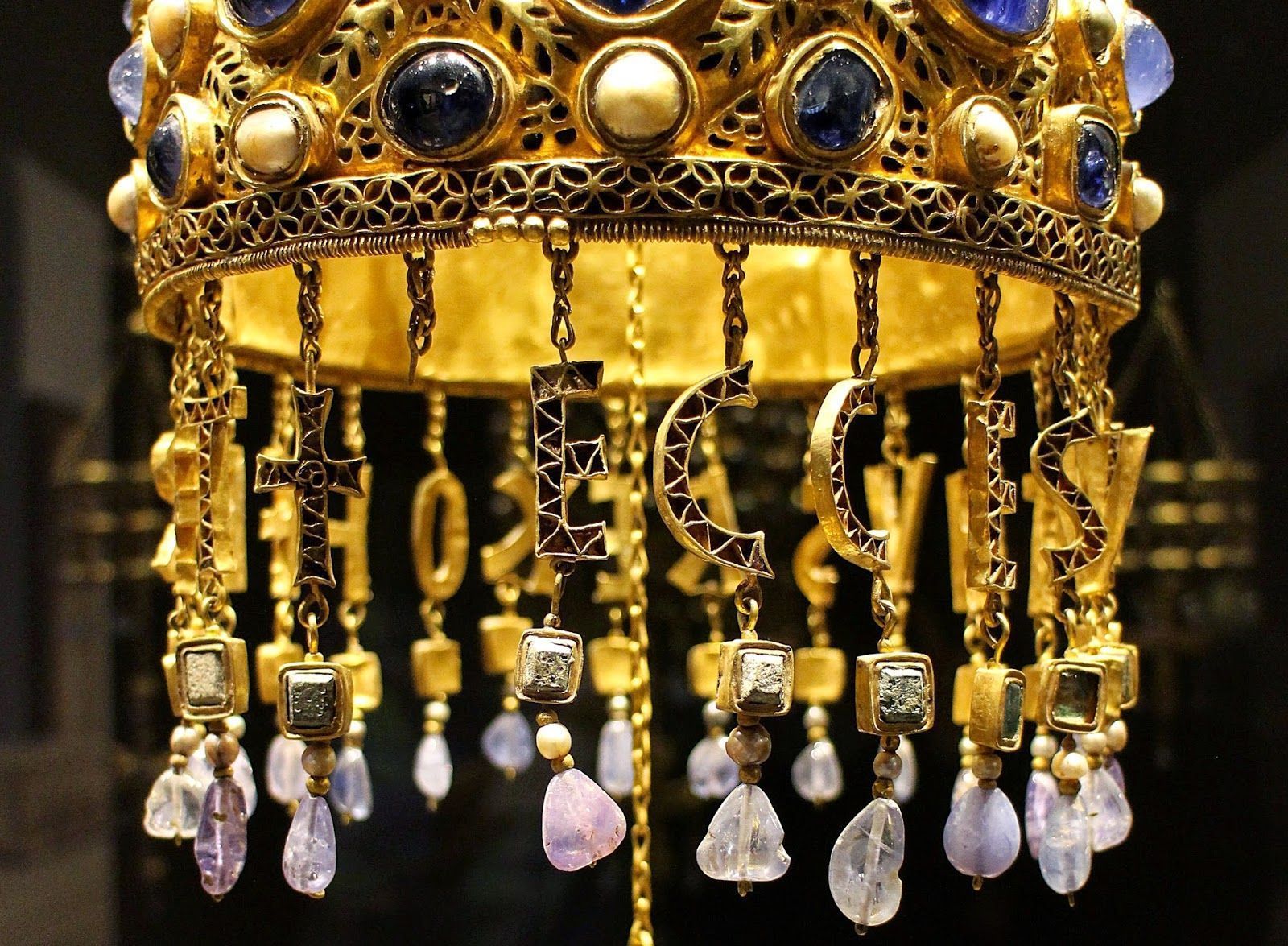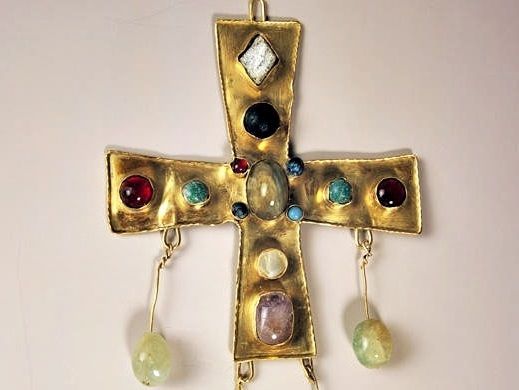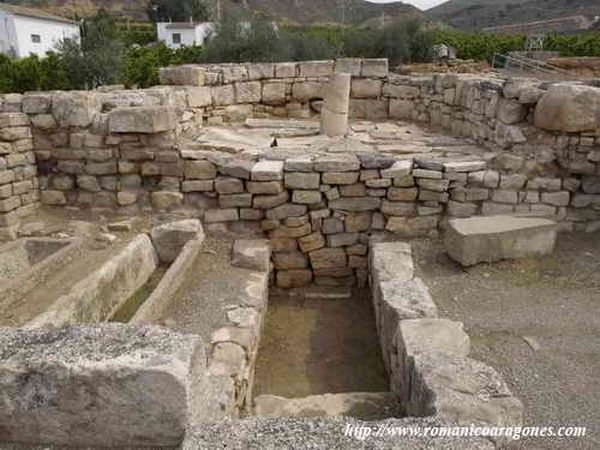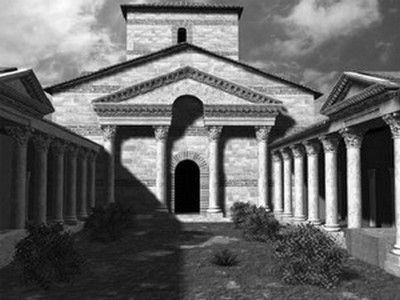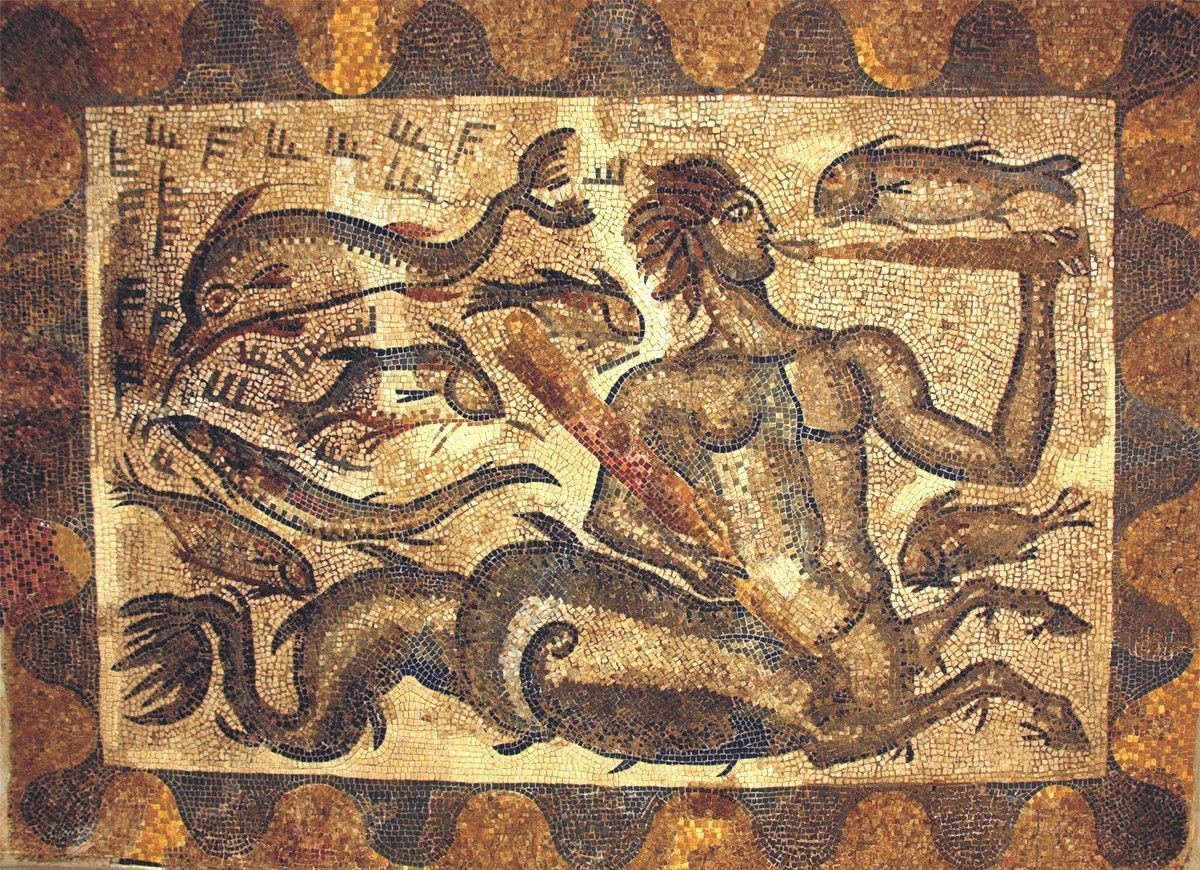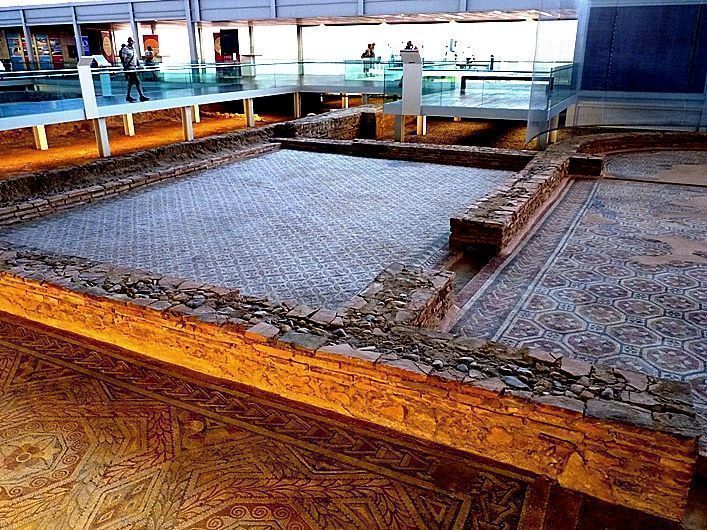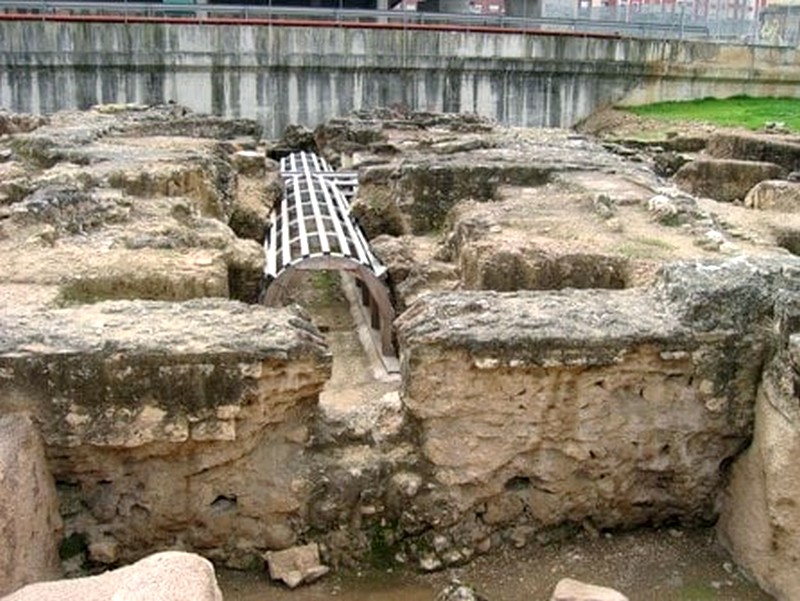Index of files of monuments
TESORO DE GUARRAZAR
Visigoth - 7th Century - Toledo
El tesoro de Guarrazar es un conjunto de piezas de orfebrería visigoda del siglo VII compuesto por coronas votivas, cruces, colgantes y fragmentos sueltos, de oro, gemas y vidrios. Su finalidad era de donación regia a una iglesia, en este caso en el contexto del yacimiento de Guarrazar, en Guadamur, a 11 km de Toledo.
TESORO DE TORREDONJIMENO
Visigoth - 7th Century - Jaén
El conjunto de Torredonjimeno, descubierto en 1926 en el paraje de la Majada de Garañón (Torredonjimeno, Jaén), está considerado como un conjunto gemelo al de Guarrazar, fechable a finales del siglo VII, y compuesto por fragmentos de cruces de diferentes tipos, restos de coronas, colgantes y vajilla.
VALENCIA LA VELLA
Visigoth - 6th Century - Valencia
The Hispanic archaeological heritage is still a source of great surprises at the beginning of the 21st century. The astonishment is that we are referring to an extensive site, of about 5 hectares built on a raised and stepped terrace between the right bank of the Túria river and the Barranc dels Clavills, only accessible from the western side, which is located just 16 km from the city of Valencia, approximately in the center of the third metropolitan area of Spain. It is a Visigothic city that is called to be a reference point for a historical stage that is still too invisible in our collective imagination.
VILLA FORTUNATUS
Visigoth - Siglo IV, 5th Century, 6th Century - Huesca
As part of a larger site, two Roman villas and a Paleochristian basilica are superimposed, the oldest known in Aragon, which was modified and reused in the sixth century Visigoth. It has three naves separated by arcades and a single semicircular apse interiorly, but with a flat front, with an exterior baptistery in front of the head. Magnificent mosaics of the Roman villas and different Visigothic elements of the 6th century are preserved, such as a chancel and a magnificent chrismon.
VILLA ROMANA DE CARRANQUE
Visigoth - Siglo IV - Toledo
Located within a Late Roman villa, it belonged to the Prefect of the East in times of Theodosius and it is possibly the first Christian church known in Spain. It has a large lobby, an uncovered atrium fringed with two covered galleries supported upon columns, a cruciform church inscribed in a square and a four lobed mausoleum attached.
VILLA ROMANA DE LA COCOSA
Visigoth - 5th Century - Badajoz
The remnants of this construction were found among those within a Roman villa, with a rectangular plan with two opposed apses, horseshoe shaped, one that contained a tomb, at the north, another one at the south and a third one, much smaller on the eastern wall with unknown purpose, as a continuation of a small corridor between the nave and the northern apse.
VILLA ROMANA DE VERANES
Visigoth - 4th and 5th centuries - Asturias
The Roman Villa of Veranes, is an archaeological site that was previously known as Torrexón de San Pedro. It is approximately one hectare in size and is located in the parish of Cenero, in the council of Gijón, about 12 kilometers from the city and very close to the ancient Roman route that connected these territories with its capital, Asturica Augusta (Astorga).
VILLA ROMANA LA OLMEDA
Visigoth - Siglo IV - Palencia
La Villa Romana La Olmeda fue descubierta en 1968 por don Javier Cortés, mientras labraba sus tierras. Se trata de una mansión del Bajo Imperio (siglo IV) compuesta por un patio central en torno al cual se articulan las distintas dependencias. Destaca de entre todas ellas el salón principal (oecus) el cuál posee los mejores mosaicos del conjunto; uno que representa el episodio de Hércules en Skyros y bajo este, una cacería, siendo ambos uno de los mejores ejemplos mundiales de mosaicos romanos.
XENODOQUIO DE MÉRIDA
Visigoth - 6th Century - Badajoz
The city of Mérida treasures an impressive monumental and archaeological complex. One of the lesser known archaeological remains is the Xenodochium; It is located near the Basilica of Santa Eulalia, to the Northeast. In the second half of the 6th century, when Mérida was one of the main cultural and economic centers of the Iberian Peninsula, Bishop Mausona ordered the construction of a hostel to accommodate the many pilgrims who came to visit the martyrium of the Saint Merida. from all points of the Mediterranean, and also as a residence for the local needy patients.
YACIMIENTO ARQUEOLÓGICO DE EL MONASTIL
Visigoth - 6th Century - Alicante
On the top of a hill located 1 km from the historic center of Elda, an archaeological site is being studied in which remains of Chalcolithic, Bronze Age, Phoenician, Iberian, Roman, and Visigothic settlements are being found, with remains important of Byzantine domination during part of the 6th and 7th centuries, among which those of a rectangular church with an ultra-semicircular apse and a small bapistery in a room attached to the side stand out.
YACIMIENTO ARQUEOLÓGICO DE NAVALVILLAR Y NAVALAHIJA
Visigoth - 6th Century - Madrid
The archaeological sites located in the municipality of Colmenar Viejo are framed within the generality of the late-antique rural habitat; that is, a polynuclear habitat: with several nuclei scattered in the same territory with a scattered plane, whose floors offer small family groups and other common work spaces, on numerous occasions interconnected with each other by a small fence or enclosure. Its origin is linked to the colonization of the Cuenca Alta del Manzanares during the 6th century, to develop activities other than the traditional agricultural ones, which gave rise to a high density of mining and industrial deposits in the area.
YACIMIENTO ARQUEOLÓGICO DE ORETO-ZUQUECA
Visigoth - 6th Century - Ciudad Real
In an area where activity has been located since the s. I BC, remains of Visigothic buildings are preserved in which architectural structures of an episcopate can be recognized, that of Oretum, possible basilica and annexes, baptistery and other indeterminate rooms; A large necropolis has also been located with a great variety of types of tombs, highlighting one with a lauda musiva and mention of the deacon Aurelius Vincentius; next to these ecclesiastical architectural remains, a baptismal pool and annexes have been located.
YACIMIENTO DE CERCADILLA
Visigoth - Siglo IV, 6th Century - Córdoba
Although it was already known about the existence of a site in the place from some work at the station in 1922, the true discovery and destruction of most of the remains of this exceptional palace, built around the year 300, occurred during the construction of the new AVE station in 1991. Then most of an enormous palace complex that occupied eight hectares disappeared, with a plaza of more than 25,000 m2, and a palatine area around a large semicircular cryptoportico, which serves as the center of the rest of the architectural units of the building, among which the royal classroom stood out.
YACIMIENTO DE EL BOVALAR
Visigoth - 6th Century - Lérida
Settlement occupied between the 5th and 8th centuries where, inside a village of stone houses, there is a Paleochristian basilica with three naves separated by columns with an apse with two funerary side chapels, a baptistery with a small pool for baptism by immersion with a Visigoth-era canopy, and a necropolis in and around the church. Visigothic coins from Egica, Akhila and Witiza have been found in the excavations. It seems that the whole set caught fire in the early S. VIII and was abandoned.
YACIMIENTO DE GUARRAZAR
Visigoth - 7th Century - Toledo
El yacimiento arqueológico de Guarrazar, situado en la localidad de Guadamur, provincia de Toledo, alberga los restos de un complejo monumental de época visigoda, compuesto por una basílica, dependencias monacales y una residencia palatina. En este enclave se halló el denominado Tesoro de Guarrazar, compuesto por cruces y coronas votivas del siglo VII, seguramente ofrendadas en la basílica como exvoto real.
- « Previous
- 1
- …
- 3
- 4
- 5
- 6



